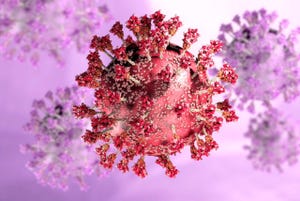MD&M East 2011 Preview: Making Devices for the People
May 4, 2011
For all of the aseptic technical details and analytical thinking that goes into developing medical devices, it’s a fundamentally human enterprise. Humans design, make, and perhaps most importantly, use and rely on medical devices.
That’s where Michael Wiklund and other practitioners of human factors engineering come in. It’s their business to make the relationship between a device and its users as error-free and engaging as possible.
“It’s about taking knowledge about people, their physical and cognitive characteristics,” Wiklund says, “and applying it in the design of products or systems so that the end result is a usable and safe product or system.” Wiklund, who is the president of human factors engineering firm Wiklund Research and Design Inc. (Concord, MA), is chairing a session about human factors engineering at MD&M East in New York City. Wiklund’s session is on Tuesday, June 7.
Despite the essential nature of designing products with users in mind, device makers were relatively slow to adopt human factors engineering as a standard part of the development process. Now, Wiklund says he sees a human factors “revolution” taking place.
“I call it a revolution because it’s really happened very rapidly over the last five years,” Wiklund says. “Companies have gone from paying limited attention to human factors, predominantly for reasons such as commercial advantage and liability protection, to, by virtue of the latest FDA expectations and international expectations, investing heavily in human factors.”
There are serious consequences to neglecting human factors during the development process, including the risk that a device won’t receive FDA approval. The agency, Wiklund says, views “breakdowns in the interaction between a person and a device as another kind of failure that needs to be studied along with other categories of failures, and manufacturers are responsible for mitigating risks due to design shortcomings that could induce a dangerous use error.”
There is more to human factors engineering than merely adhering to a safety requirement, says Daniel Haberstich of Ethicon Endo-Surgery Inc. (Cincinnati). He is giving a presentation on integrating human factors into an established R&D process during Tuesday’s session.
“In my opinion, most medical device companies approach usability from a risk management perspective, focusing their human factors efforts on safe and effective use,” Haberstich says. “I don’t believe they’re embracing usability as it relates to the overall user experience the way some consumer product companies have.
"You look at products like the Apple iPhone and how much of a better user experience that is than some of the smartphones that preceded it,” he says. “There’s tremendous opportunity in the medical device industry to get serious about user experience, go beyond what these requirements are asking us to do, and to really delight our customers.”
In addition to the increasing demand and interest in human factors, Wiklund says that there is something uniquely satisfying about his chosen field.
“I think human factors is a particularly interesting facet of medical device development,” Wiklund says. “Working with people, and helping to ensure the quality of interaction between people and products, is fun. It is fulfilling to do work that stands to improve medical care and prevent injuries, not to mention bolster a company’s product sales.”
The session will also include presentations about identifying the root causes of use error; using ethnographic research techniques to develop a deeper understanding of user needs; identifying dangerous potential use errors requiring new preventive measures; usability testing; and using advanced technology to enhance a device’s usability. There will also be a panel discussion of human factors issues that confront medical device manufacturers today.
In addition to the conference, be sure to check out the Medical Design Excellence Awards ceremony in New York on June 8. Companies who submitted winning products will be presented with gold and silver awards. The MDEA Lifetime Achievement award will be given this year to Alfred Mann.
About the Author(s)
You May Also Like


